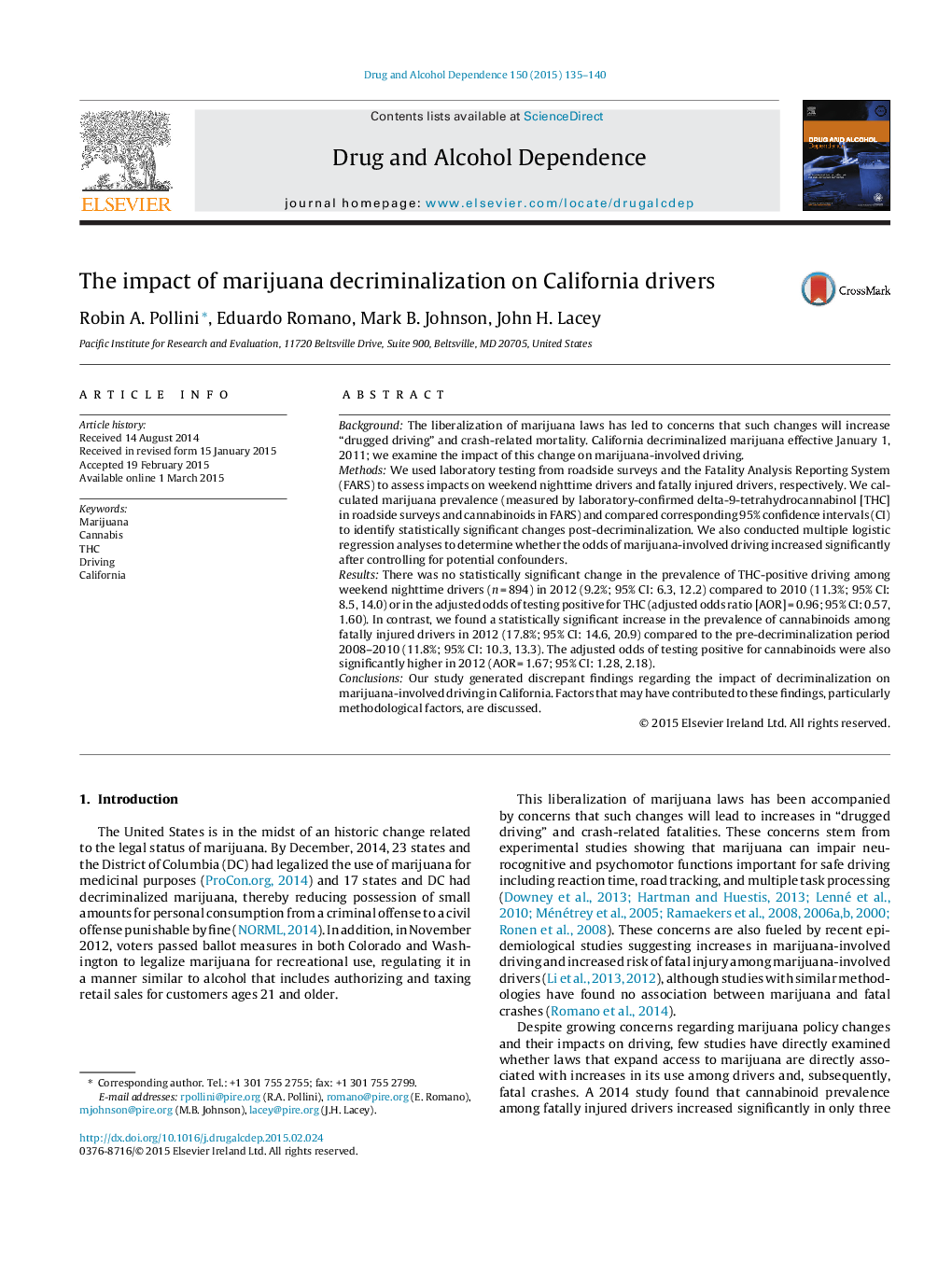| کد مقاله | کد نشریه | سال انتشار | مقاله انگلیسی | نسخه تمام متن |
|---|---|---|---|---|
| 1069818 | 1486141 | 2015 | 6 صفحه PDF | دانلود رایگان |
• We examine decriminalization's impact on marijuana-positive driving and crash fatalities.
• There was no change in THC-positive driving among nighttime weekend drivers.
• There was a significant increase in crash fatalities involving cannabinoids.
• We discuss possible reasons for these discrepant findings.
• We conclude that more standardized data collection is needed to inform policies on “drugged driving.”
BackgroundThe liberalization of marijuana laws has led to concerns that such changes will increase “drugged driving” and crash-related mortality. California decriminalized marijuana effective January 1, 2011; we examine the impact of this change on marijuana-involved driving.MethodsWe used laboratory testing from roadside surveys and the Fatality Analysis Reporting System (FARS) to assess impacts on weekend nighttime drivers and fatally injured drivers, respectively. We calculated marijuana prevalence (measured by laboratory-confirmed delta-9-tetrahydrocannabinol [THC] in roadside surveys and cannabinoids in FARS) and compared corresponding 95% confidence intervals (CI) to identify statistically significant changes post-decriminalization. We also conducted multiple logistic regression analyses to determine whether the odds of marijuana-involved driving increased significantly after controlling for potential confounders.ResultsThere was no statistically significant change in the prevalence of THC-positive driving among weekend nighttime drivers (n = 894) in 2012 (9.2%; 95% CI: 6.3, 12.2) compared to 2010 (11.3%; 95% CI: 8.5, 14.0) or in the adjusted odds of testing positive for THC (adjusted odds ratio [AOR] = 0.96; 95% CI: 0.57, 1.60). In contrast, we found a statistically significant increase in the prevalence of cannabinoids among fatally injured drivers in 2012 (17.8%; 95% CI: 14.6, 20.9) compared to the pre-decriminalization period 2008–2010 (11.8%; 95% CI: 10.3, 13.3). The adjusted odds of testing positive for cannabinoids were also significantly higher in 2012 (AOR = 1.67; 95% CI: 1.28, 2.18).ConclusionsOur study generated discrepant findings regarding the impact of decriminalization on marijuana-involved driving in California. Factors that may have contributed to these findings, particularly methodological factors, are discussed.
Journal: Drug and Alcohol Dependence - Volume 150, 1 May 2015, Pages 135–140
